After we have already introduced you to the most delicious Polish dishes, today we want to show you what is available in the south of the country and what dishes the Silesian cuisine has in store. Over the centuries, it has developed its own unique character, blending German and Polish, as well as Czech and Austrian culinary traditions and creating some dishes that are unique to the region, which are generally down-to-earth and usually quite hearty, although there are many overlaps with Polish cuisine, and sausages, soups and cabbage are often used here as well.

Strictly speaking, one cannot speak of a single Silesian cuisine. The region is divided into parts such as the historical Upper and Lower Silesia, some of which have their own culinary traditions. In addition, the Gorals on the border of Poland with Slovakia have their own culture, which is reflected in particular in their cuisine. Also, there are many dishes that function in the individual regions of Silesia under a different name or even involve a completely different method of production.
Silesian cuisine – These are the most delicious dishes
For centuries, Silesia was a bone of contention and a plaything of various powers and countries. Bohemia, Prussia, Austria, Poland – all set the tone here for a time. This had not only political but also culinary consequences. And although since the flight of many Silesians to Germany numerous recipes have been “taken along”, countless dishes of Silesian cuisine can still be found in Poland today, some of which have changed and some of which have been mixed with Polish culinary traditions. Today, mainly Upper Silesian cuisine dominates in the region, while in Lower Silesia cooking is often exactly the same as in the rest of the country. In the following we would like to present you our favorite dishes and show you how diverse the Silesian cuisine is, because you are surely already hungry!
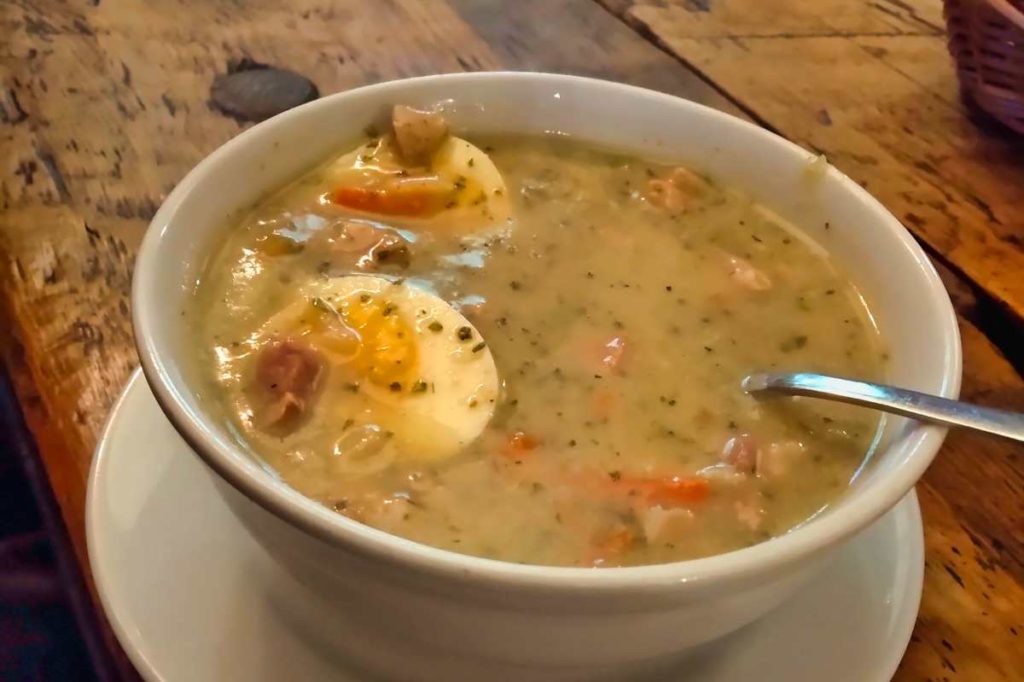
Żurek
There is perhaps no other soup that (apart from barszcz) is as representative of Polish cuisine as Żur(ek). This dish, whose name derives from the German word “sauer” (“sour”), is also found in Silesia. Żurek is a flour soup made on the basis of sourdough. It is then supplemented with sausage or a meat garnish and a boiled egg. The taste of Żurek is sour and relatively unusual for our palates. Unlike other Polish region, a traditional Silesian Żurek is made on the basis of whole rye flour, but it is a traditional Easter food just like in the rest of the country.

Roulades
Apart from the Silesian Heaven, which we will introduce to you below, there is hardly a dish that is as representative of Silesian cuisine as beef roulades. Traditionally, roulades were served mainly on special occasions such as weddings, and later also on communions. Nowadays, however, they are also served quite simply on Sundays. Making a roulade is a bit demanding, because you first have to season a large piece of meat (and coat it with mustard), and then top it with bacon, onions and pickles (although there are other variations here as well).
This in itself is not complicated, but then the roulades are traditionally tied or fastened with toothpicks and it requires some practice that afterwards during braising everything does not fall apart. The roulades are then traditionally served with red cabbage and Silesian dumplings, which brings us to the next dish of Silesian cuisine. By the way, I ate the roulade shown on our cover picture in a great restaurant in Katowice.
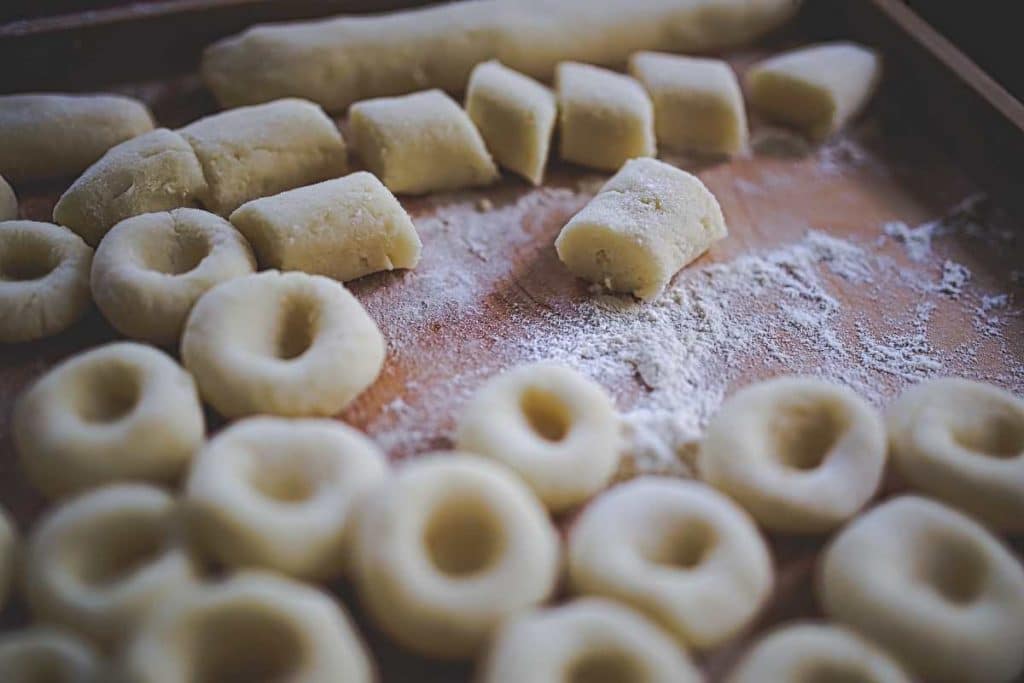
Silesian dumplings
A good example of how much influence Bohemian-Czech cuisine had on Silesian cuisine are Silesian dumplings (Kluski śląskie), after all, dumplings are something like the Czech national dish. The dough is made from mashed potatoes, potato flour and salt, and sometimes an egg is used. Many then roll the dough into a roll and cut small slices, while others roll the small dumplings by hand. A small hole is then pressed into the dough with the thumb, giving the dumplings their classic shape. Cooked in salted water, the Kluski śląskie, as they are called in Polish, are then usually served as a side dish with meat dishes such as rouladen.
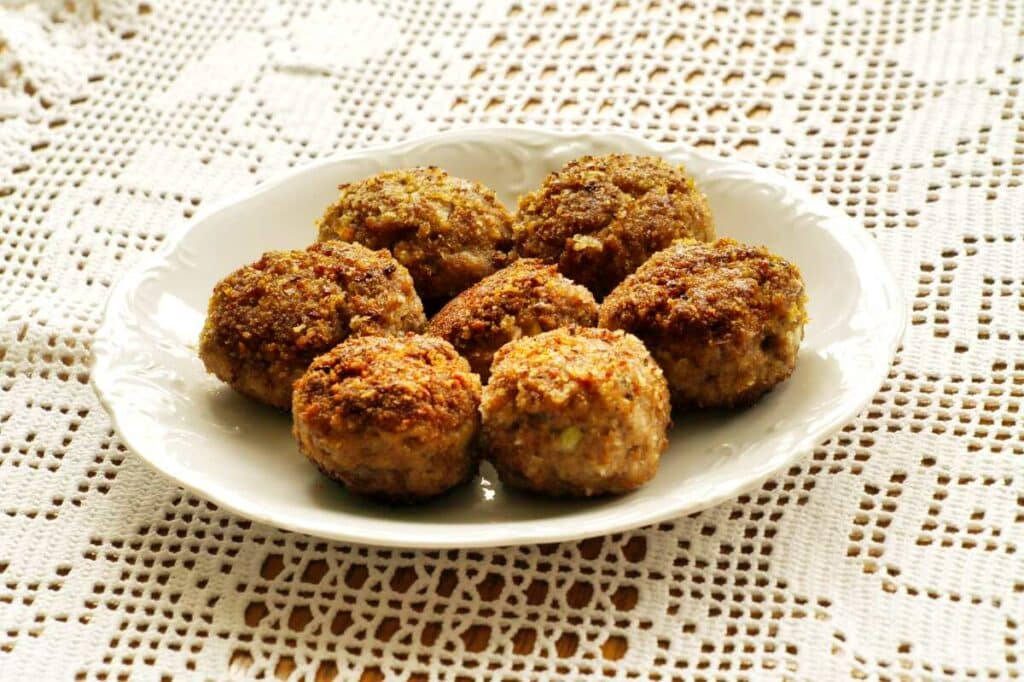
Karminadle
The otherwise unusual term Karminadle in Poland, which also appears in numerous other spellings, means nothing more than small meatballs. Traditionally, they are made from pork and are a bit spicier than in other countries. They are also particularly juicy, as in Silesia they are often fried in lard. In the meantime, they have become so important in Silesia that the Polish Ministry of Agriculture has already had them protected as a regional culinary cultural asset. In the past, they were served mainly on festive occasions, but today they are a normal dinner – and very universal, because they are served with a variety of side dishes such as dumplings, red cabbage, but also buckwheat semolina or travel.
Another variant, no longer frequently used today, also comes from Upper Silesia. In addition to pork, herring was also used here. There are also local variations in which rabbit meat is used, although not as frequently today as it was around 100 years ago.

Gingerbread sauce
So far, the dishes described in our list were all relatively down-to-earth, but now it’s getting really crazy, or have you ever thought of making a sauce from gingerbread? The Silesian cuisine knows such a sauce and you have to get used to the taste. As you might expect from this very special Silesian specialty, it is cooked exclusively at Christmas, which is why it is also known as Christmas Sauce. Gingerbread is used in the sauce only in parts, parsnips, carrots and celery are used, almonds, raisins and malt beer, possibly also dried fruit and nuts provide the necessary sweet note.
And what do you eat the sauce with? There are no limits to your imagination. Either classically with White Sausage, which is also known in Silesia (and which is also eaten in Bavaria with sweet mustard), or with schnitzel, but also as an accompaniment to desserts. Fun Fact on the side: The gingerbread sauce is one of the oldest recipes handed down from the former German-speaking countries. It appeared as early as the 15th century in a Königsberg (Kaliningrad) cookbook, which refers to old recipes of the Teutonic Order.
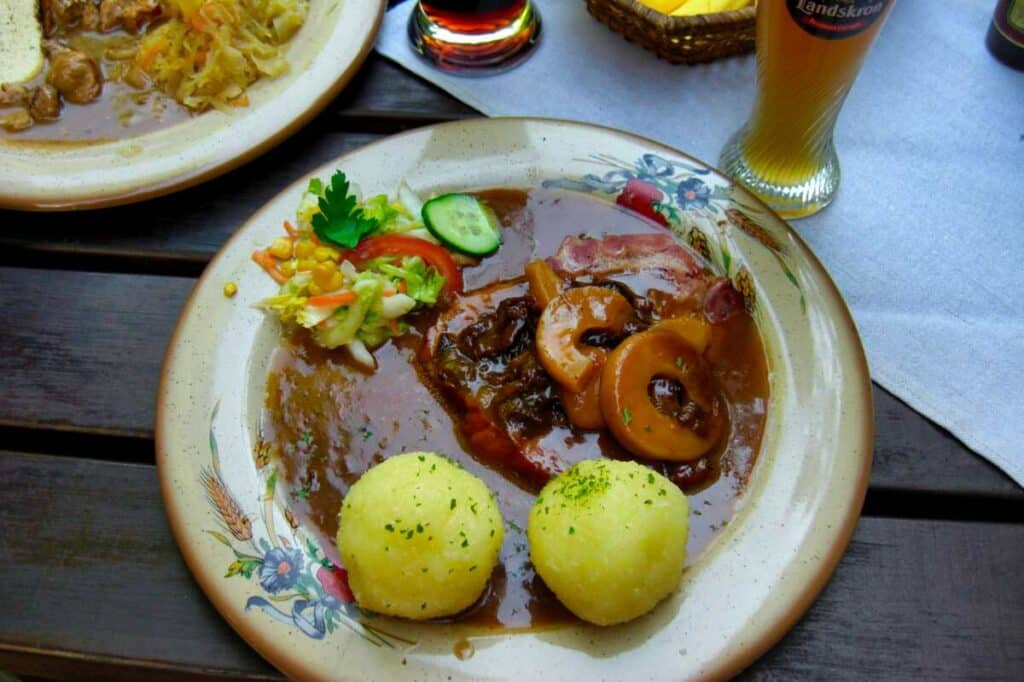
Silesian Kingdom of Heaven
Schlesisches Himmelreich or Silesian Kingdom of Heaven, as it is called in English, is perhaps the best-known dish of Silesian cuisine, along with Silesian dumplings and roulades, and is still an integral part of many menus in the easternmost part of Saxony. To be honest, there is often nothing heavenly about the Kingodom of Heaven visually at first, everything looks a bit chaotic and untidy on the plate. In terms of taste, however, the Silesian Kingodom of Heaven is really a highlight. Smoked pork belly is used, which is cooked together with baked fruit, lemon peel and a pinch of cinnamon, often also with jam. It is best served with Silesian dumplings, but the Kingodom of Heaven also goes perfectly with ordinary potato dumplings (as shown in the photo).
Krupniok
As mentioned above, sausage is also an important part of Silesian cuisine. In addition to white sausage, there is also a special variant, Silesian Krupniok. In addition to meat, the sausage is also characterized by the use of pearl barley, which generally plays an important role in Silesian cuisine; blood and offal can also be used, at least in the traditional variant. In the meantime, people in Silesia pay particularly strict attention to adhering to the narrow specifications for creating a genuine Krupniok; after all, it is not only one of the oldest Silesian dishes, but since 2016 it has also been an EU-protected regional dish that can only be produced here in this way.
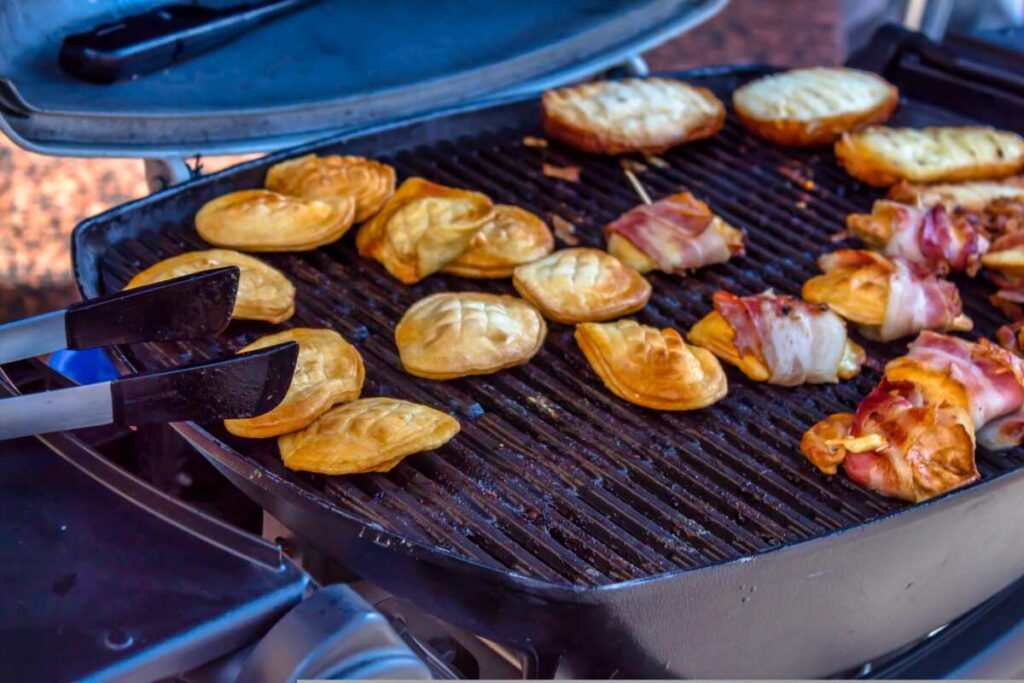
Oscypek
There is ordinary cheese and there is Oscypek, for me a culinary highlight every time I am in Poland. Oscypek is a traditional part of the Gorals’ cuisine and is made in the Tatra Mountains by that tribe, both on the Polish and Slovak sides, where it is known as Oštiepok. To make it, sheep’s milk is pressed and then hung and, very importantly, smoked, which gives the cheese its unmistakable aroma.
Oscypek is especially delicious when fried and then enjoyed with a fruity jam – an ideal combination of smoky and sweet and so often found at stalls in markets in other regions of Poland! The cheese has become so popular that it is also available (albeit under a different name, as it too has a protected designation of origin) in the rest of Poland at gas stations and in supermarkets as a snack.
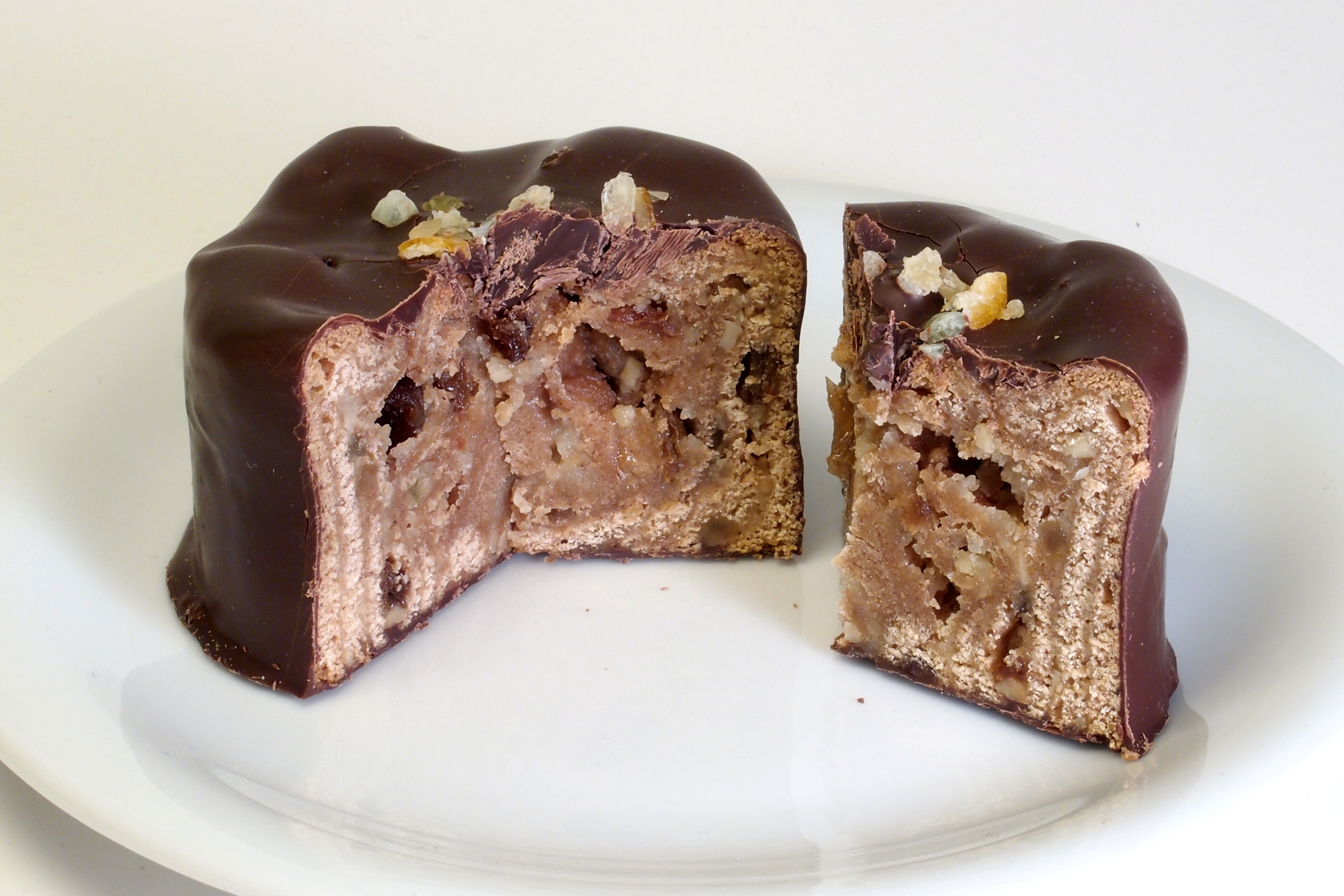
Liegnitz bomb
Don’t worry, behind the name Liegnitz Bomb (Polish: Legnicka Bomba) hides a dish that could be dangerous only for your figure. The specialty from the city of Liegnitz (Legnica) in Lower Silesia is a gingerbread invented in the mid-19th century, which is optionally filled with nuts, marzipan and dried fruit. Often rose water is then added to enhance the flavor. The “bomb”, which comes in various sizes and shapes, is then covered with chocolate. Today, the calorie “bomb” enjoys a certain popularity in Silesia again, but especially it is known and appreciated in Lusatia and Brandenburg.
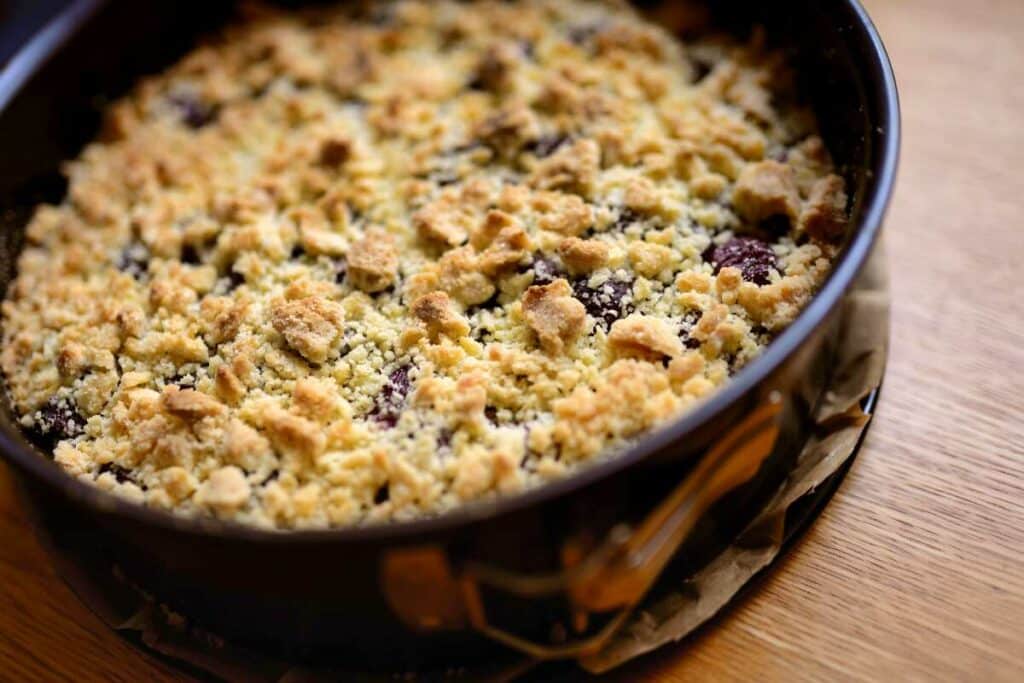
Crumble cake
Crumble Cake is, of course, also known in other parts of the world. But did you know that it is a traditional Silesian (other sources assume that the dish originates from Saxony) dessert? Just like in Germany, it is usually made on a baking tray, on which a yeast dough is then placed. In Silesia, in addition to the butter crumble cake, apple crumble cake and poppy seed crumble cake are particularly popular, and poppy seeds are used in many Silesian desserts anyway.
That’s it! We recommend you to visit the Śląskie Smaki site, where you can also learn everything about Silesian cuisine in English – including countless recipes! Thanks to the practical map, you can also see where which products are produced and thus visit exciting, sustainably working businesses during your vacation and eat or buy there. Since 2006, Poland has also hosted the popular festival of the same name, where you can sample delicious Silesian cuisine at a different location in Upper Silesia each year.
How did you like the article about Silesian cuisine? Which dishes would you like to try? Let us know and write us a comment!


I enjoyed reading about Silesian Cooking. My Family originated from Schlesien. I grew up with this cooking in Germany! Now, i reside in the US. And i miss this food, esp. Herring. Danke für die Erinnerung.